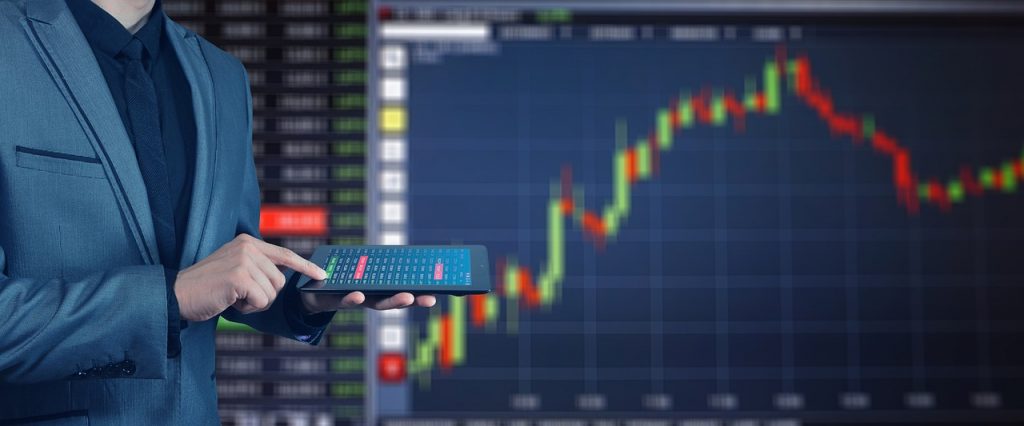Measuring the Economy
GROSS DOMESTIC PRODUCT (GDP) is the most common way to measure the economy. But beware: it is a deeply imperfect measure. The gross domestic product adds up the worth of all the various merchandise and services that are created for cash within the economy. GROSS DOMESTIC PRODUCT is thus one measure of the total value of the work we do – but only the work we do for money.
GDP – Measuring The Economy
In the private sector of the economy, GDP is based on the market prices of everything that’s bought and sold. In the public and non-profit sectors, it is based on the cost of everything that’s produced. In both cases, statisticians must deduct the costs of the many inputs and supplies purchased in any particular industry, from the total value produced by that industry. (This is so that we don’t double-count the work that went into all those inputs.) In this way, GROSS DOMESTIC PRODUCT is designed to only include the VALUE ADDED by new work at each stage of production.
An obvious downside of GDP is that it excludes the worth of labor that’s not performed for cash. This is a highly arbitrary and misleading exclusion. For example, most people perform unpaid chores in their households, and many must care for other family members (especially children and elders). Some of this household work can be “outsourced” to paid cleaners, nannies, and restaurants (the richer you are, the more you can outsource), in which case it is included in GDP. But if you “do it yourself,” then it doesn’t count! Volunteer work and community participation are other forms of valuable, productive work excluded from GROSS DOMESTIC PRODUCT.
This phony distinction has big consequences for how we measure the economy. Unfortunately, things that we measure often take on extra importance (with the media, and with policy-makers), purely because they can be measured. GDP underestimates the overall worth of labor performed within the economy, and thus misjudges our productivity. It undervalues the unpaid work done inside our homes and our communities. Due to favoritisms in reception and within the workplace, most of that unpaid work is finished by women; thus, GDP underestimates the economic contribution of ladies.
It’s especially misguided to interpret GDP as a measure of human well-being. We’ve seen that there are many valuable things that are not included in GDP. On the other hand, many of the goods and services that are counted in GDP are utterly useless, annoying, or even destructive to human well-being – like dinner-hour telephone solicitations, many pharmaceuticals, excess consumer packaging, and armaments production. Moreover, just because a society produces more GDP never ensures that most members of society will ever receive a larger slice of that growing pie.
So we must be cautious in our use of GDP statistics, and we must never equate GROSS DOMESTIC PRODUCT with prosperity or well-being.
Despite these caveats, GDP is still an important and relevant measure. It indicates the value of all production that occurs for money. This is an important, appropriate piece of information for many purposes. (For example, the ability of governments to collect taxes depends directly on the money value of GDP.) We need to understand the weaknesses of GDP and supplement it with other measures. Above all, we must remember that expanding GDP is never an end in itself. At best, properly managed, it can be a means to an end (the goal of improving human well-being). Indeed, there is a positive but imperfect relationship between GDP and human welfare
This suggests that we want to worry about what proportion we manufacture, however equally with what we use it for.
To be meaningful, GDP figures should take many further factors into account. If the apparent worth of our work grows strictly due to INFLATION (which could be a general increase in the costs of all merchandise and services), then there hasn’t been any real improvement in the economy. so we distinguish between NOMINAL GDP (measured in dollars/pounds) and REAL GDP (which deducts the result of inflation). There are many other economic variables (such as wages and interest rates) for which this distinction between nominal and real values is also important. ECONOMIC GROWTH is usually measured by the expansion of real GDP.
In addition, a country’s GDP could expand simply because its population was growing – but this does not imply that the country is becoming more prosperous. This is important when comparing growth rates across countries. For example, in countries with near-zero population growth (such as Europe and Japan), even slow growth of real GDP can translate into improved living standards; this is not the case where the population is growing more quickly. Therefore, economists often divide GROSS DOMESTIC PRODUCT by population, to get a measure called GDP PER CAPITA. This, too, can be expressed in both nominal and real terms. Growth in real GDP per capita over time is often used as a rough indicator of prosperity – although we must always remember that GDP excludes many valuable types of work, and says nothing about how production is distributed.
This post contains the content of book Economics for Everyone – a Short Guide to the Economics below is the link of a complete book
